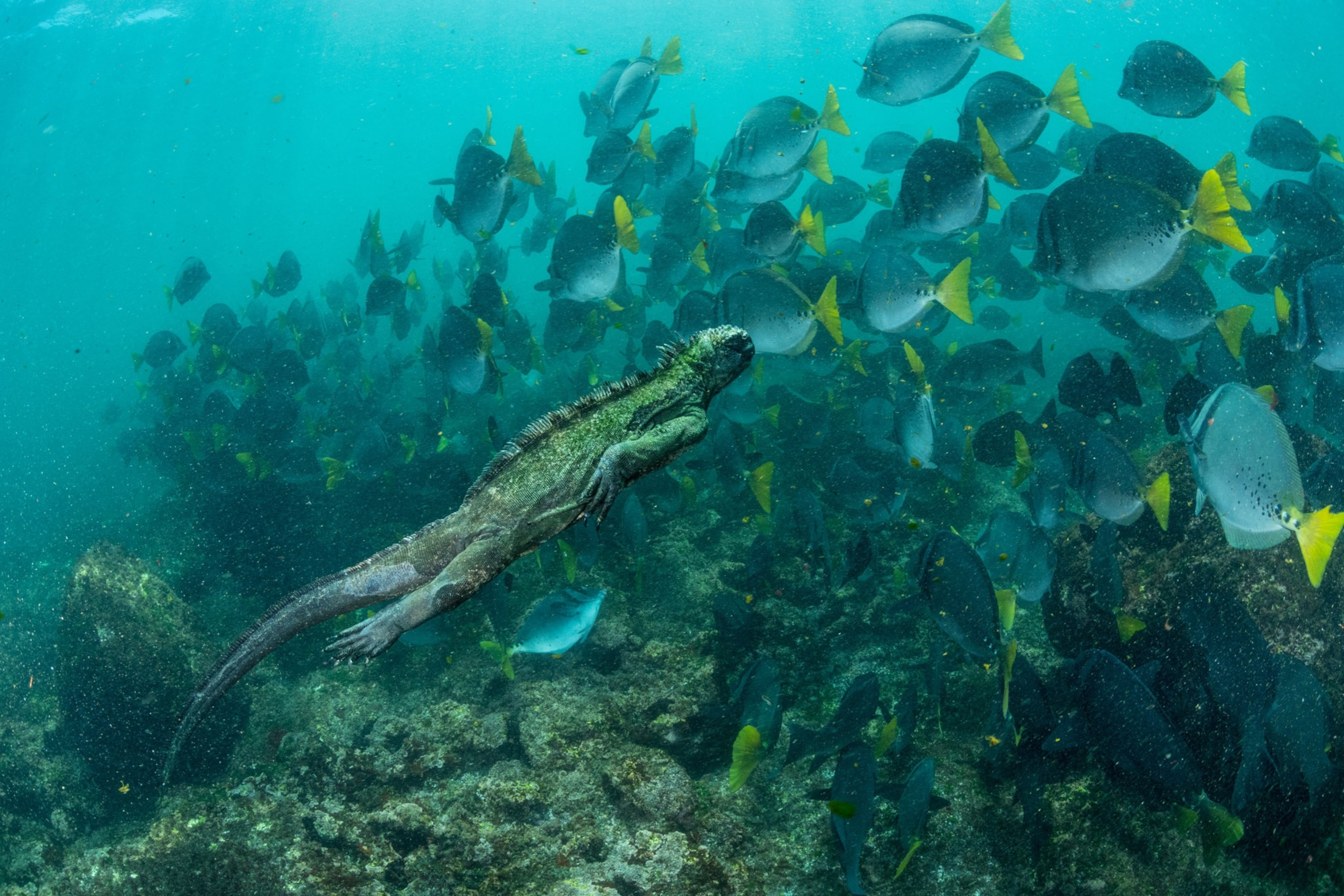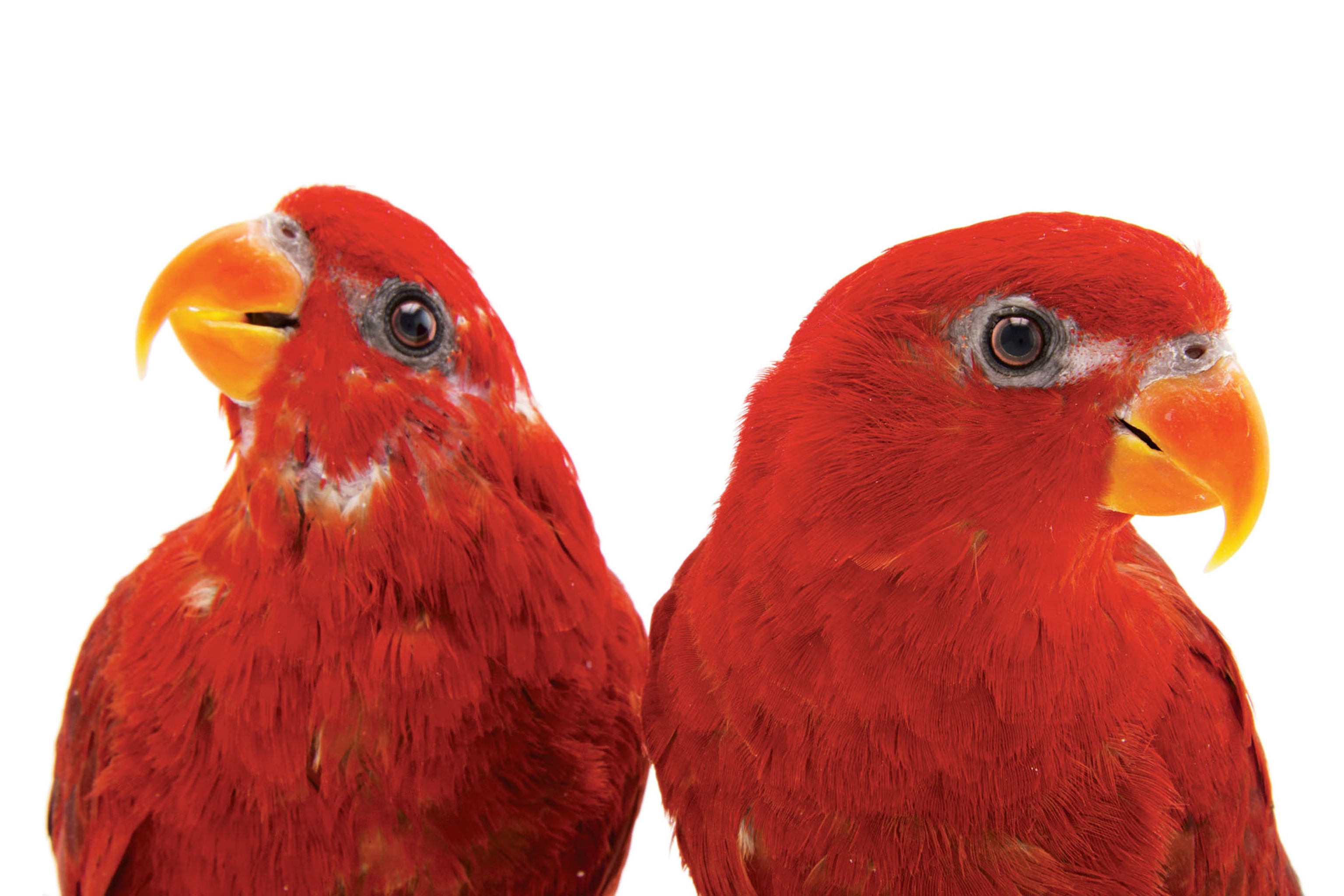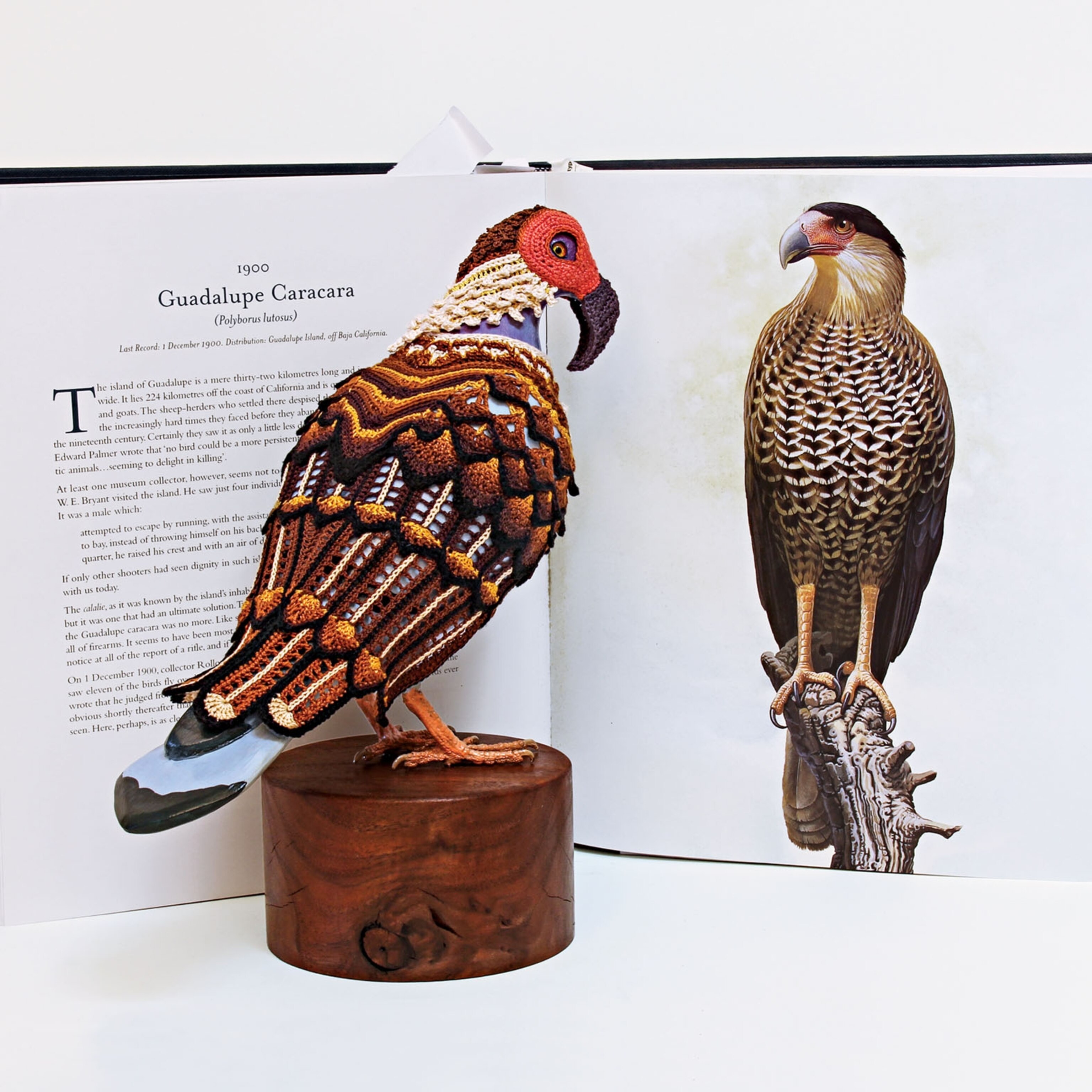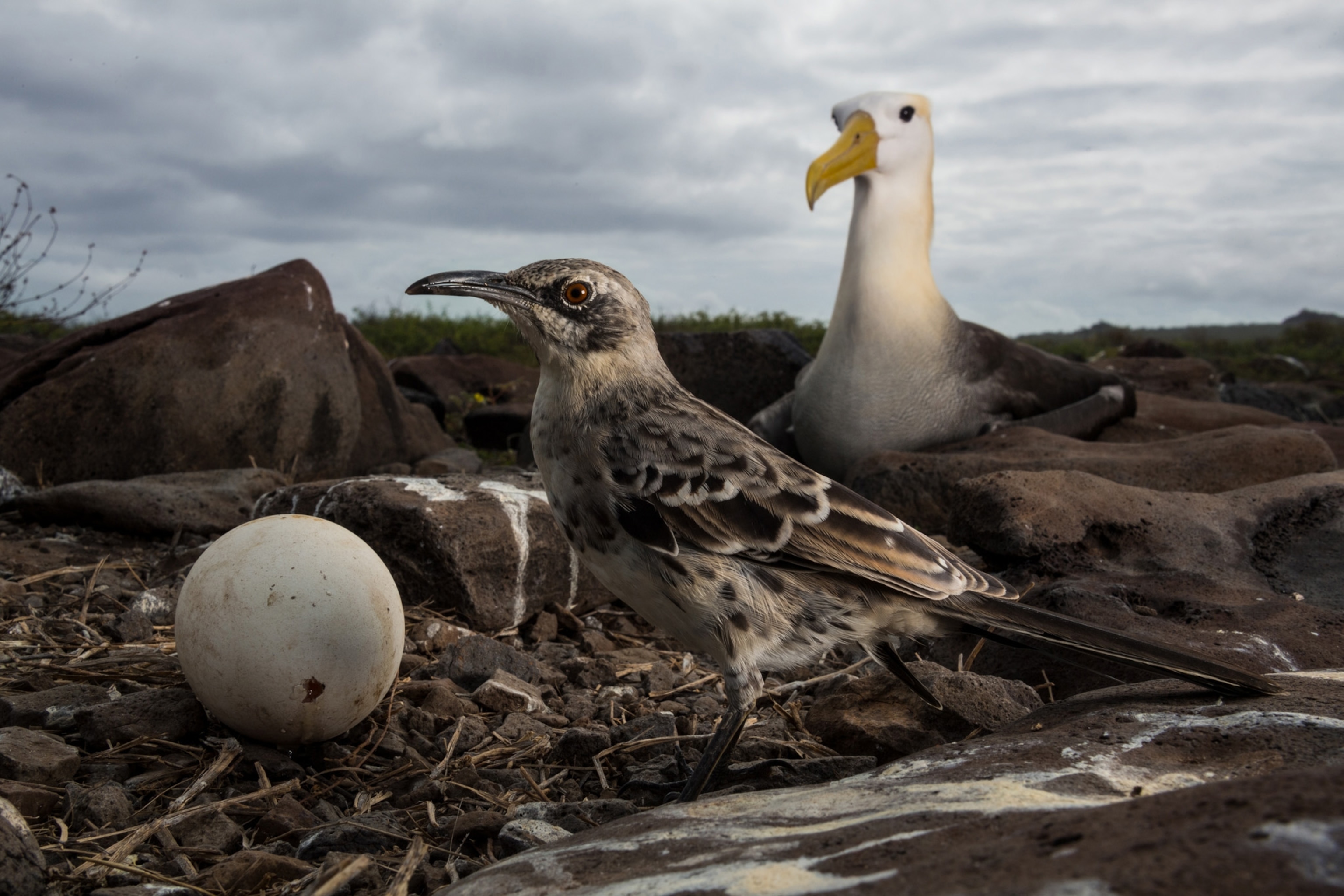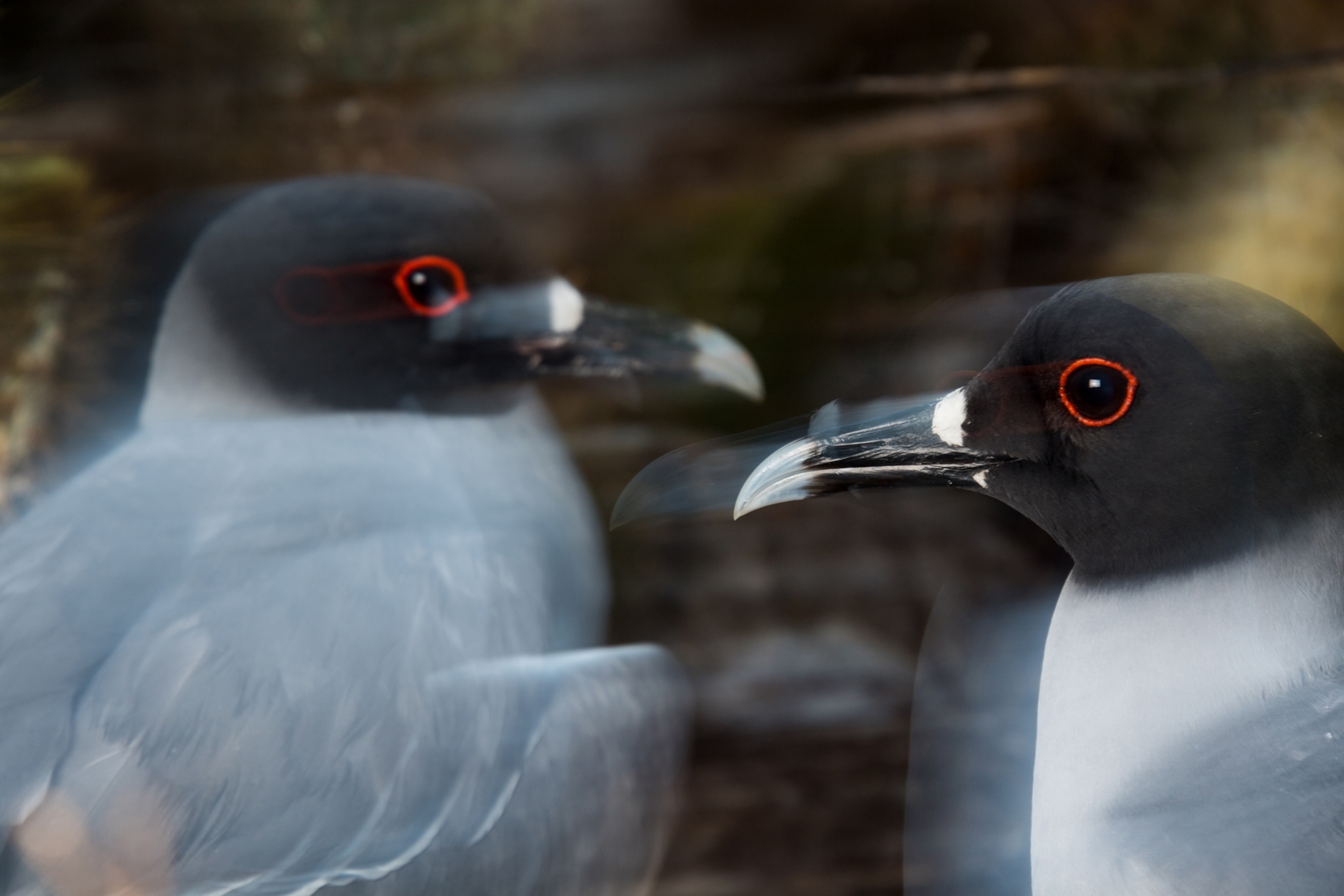A Warming Planet Jolts the Iconic Creatures of the Galápagos
Species that inspired Darwin’s theory of natural selection are facing new challenges to adapt.
Photographic fieldwork was funded in part by the Save Our Seas Foundation, the Paul M. Angell Family Foundation, and FON (Focused on Nature).
Jon Witman checks his air gauge, adjusts his flippers, and falls backward into the Pacific. Nearby, the ocean throws itself against Isla Beagle, one of a hundred-plus rocks, pinnacles, and islands that form the Galápagos archipelago, a province of Ecuador that straddles the Equator. Rebuffed, the sea retreats in a white flag of foam.
On a shelf above the spray, blue-footed boobies dance with the awkwardness of teens at a junior high prom. Below them on the rocks, an argument breaks out between two Galápagos sea lions. The scene could have looked and sounded the same when Charles Darwin sailed here almost two centuries ago. These creatures, fine-tuned to life on harsh isles, seemingly can weather anything, even time itself.
Suddenly Witman breaks the surface. “It’s beginning,” he tells me with a grimace.
He grabs his video camera from the dive boat and disappears underwater again. I plunge in after him. At 15 feet below the surface, Witman points me to a lobe coral, Porites lobata. It should resemble a mustard green pagoda, but instead it glows white against the seafloor’s bubblegum pinks and AstroTurf greens. This coral is bleaching, a reaction to excessively warm water. Soon it will be dead.
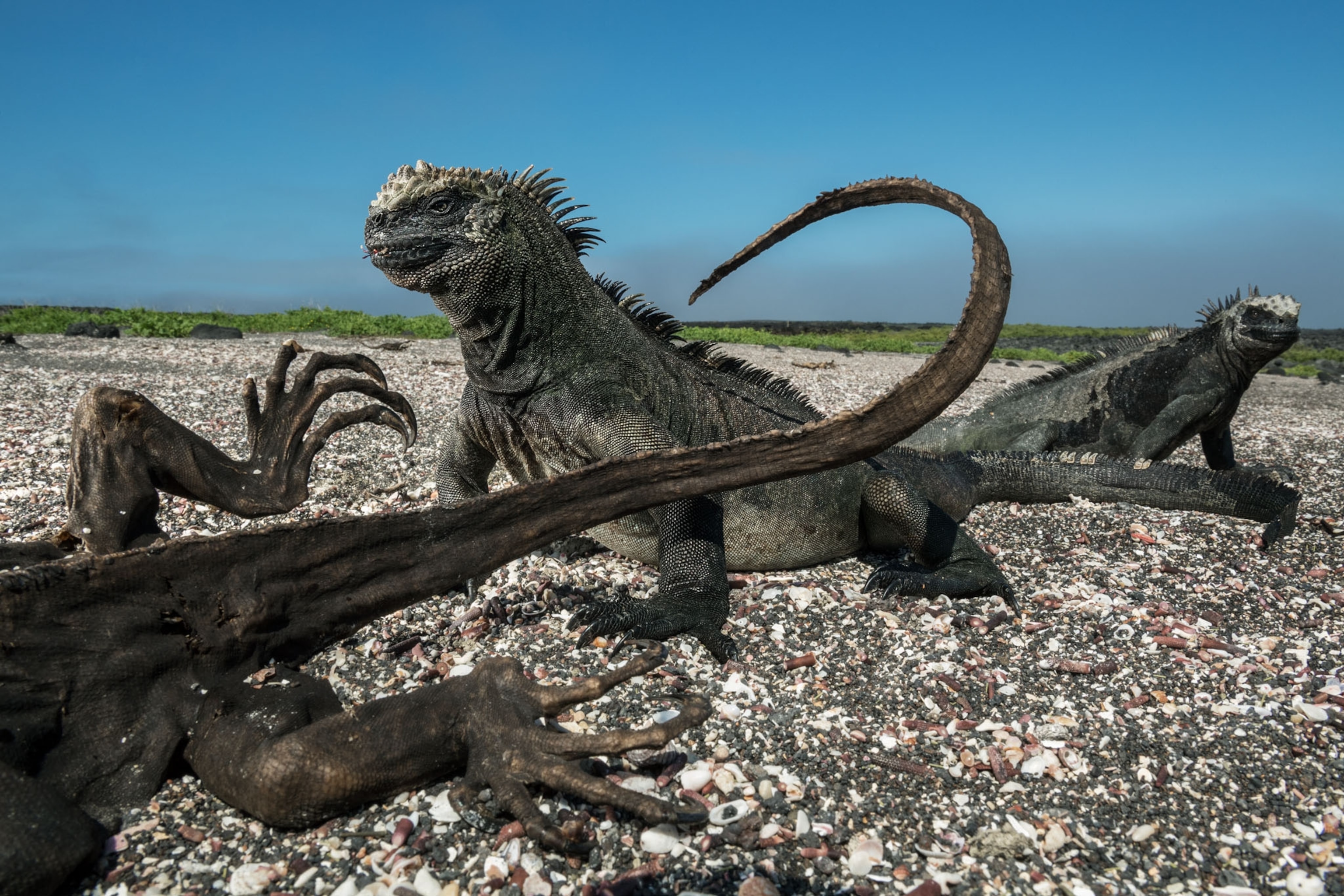


At spots such as Isla Beagle, Witman and his crew are on the lookout for change. They’ve had no trouble finding it. They’re taking the temperature of this seafloor community—literally and figuratively. During 2016’s El Niño, the most intense climatic event here in two decades, the temperatures at his dive spots reached a peak of 88°F. (Overall, water temperatures in the Galápagos region were more than 4°F above their long-term average.) Witman, who has explored nearshore ecosystems from Easter Island to the Gulf of Maine for 40 years, fears that this bleached coral could augur an explosion of bleaching—as well as other dramatic changes throughout the environment here—in the years to come.
The Galápagos are a stretch of 13 major islands that live as much in myth as on the map—a finch-crowded Brigadoon where Darwin arrived in 1835 and began to make observations that eventually would show him, and us, how life on Earth evolves. His Origin of Species would inform “almost every component in modern man’s belief system,” wrote evolutionary biologist Ernst Mayr.
As isolated as they may seem, the Galápagos aren’t immune to the impacts of modern life: Climate change is coming to the cradle of evolutionary theory. Iconic species such as tortoises, finches, boobies, and marine iguanas could suffer. The famed ecosystems that taught the world about natural selection may teach us a lesson yet again, offering us insights into what’s in store elsewhere. The Galápagos, says Witman, “are a fabulous laboratory for studying species’ responses to climate change.”
Before they were the Galápagos, they were Las Encantadas—“the enchanted ones”—warty islands laced with foam, flowing lava, and odd animals. “Man and wolf alike disown them,” wrote Herman Melville. “The chief sound of life here is a hiss.”
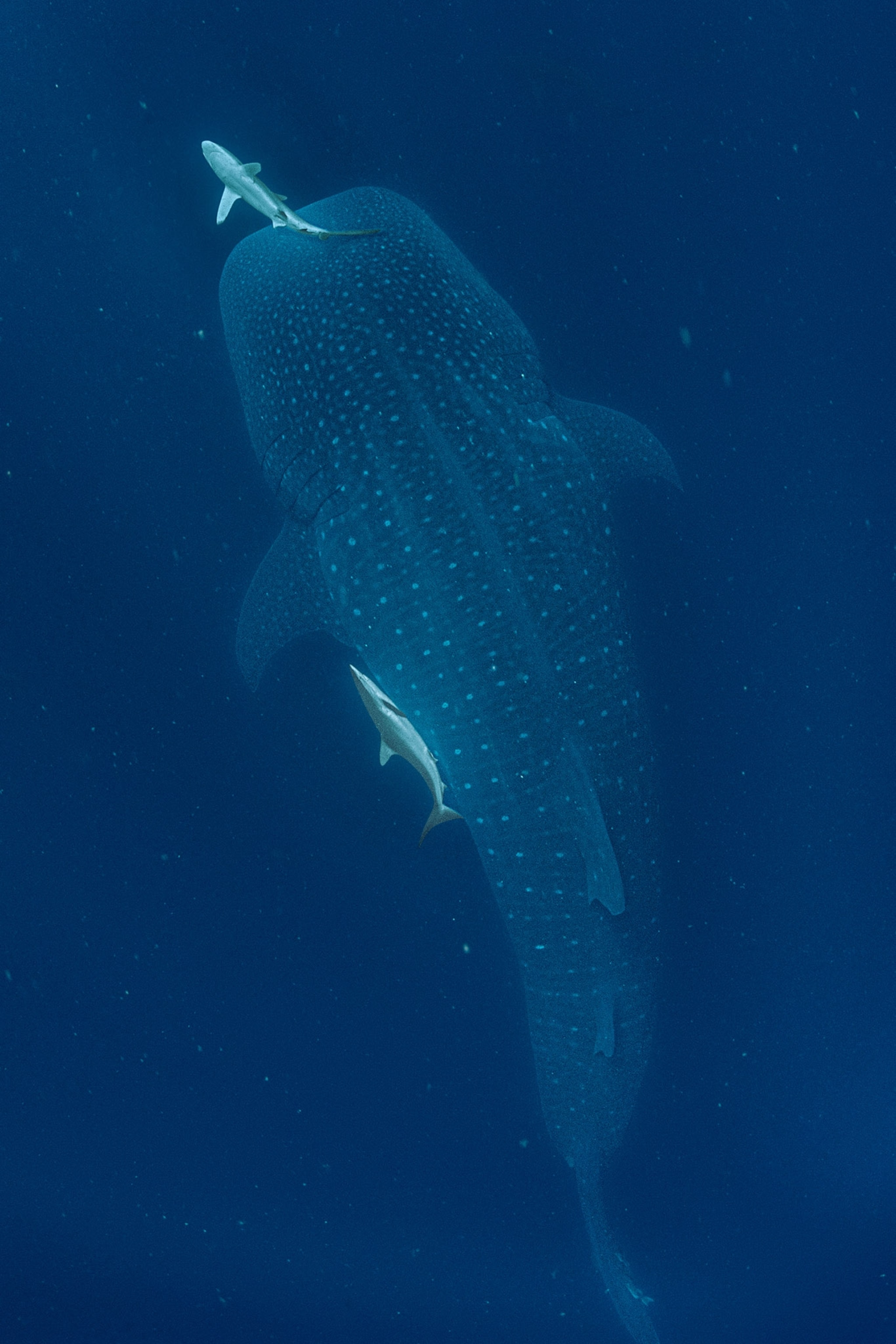
Whalers tossed those hissing tortoises into their ships’ holds for food, filled water casks, and sailed on. They were right about the strangeness: Cut off from mainland South America by about 600 miles of water, nature here ran wild. Among the animals that made the voyage to the islands from the mainland, few survived. Those that did evolved into different forms by adapting to the conditions on each island. Those that could not adapt vanished into extinction.
But there are other changes happening here now—not just the evolutionary kind. Few places on Earth give scientists front-row seats to watch ecosystems shocked so drastically, sometimes repeatedly, in such a short time.
Now, as the globe warms, Witman, of Brown University, and other scientists are trying to understand what the future will look like here. Perhaps nowhere else on Earth is the cycle of life and death driven so dramatically by climatic events known as El Niños and La Niñas, when changes in temperature, rainfall, and ocean currents force striking fluctuations in weather and food availability, both on land and in the sea. And the influence of climate change is predicted to increase the rate of El Niños that come with intense rainfall from about once every 20 years to once every decade.

Models also project that the ocean near the Equator will warm slightly faster than the rest of the tropical Pacific, according to Andrew Wittenberg, a physical scientist with the National Oceanic and Atmospheric Administration. Sea levels are predicted to rise too: 22 to 30 inches by 2100 under some projections. Scientists also think that warming waters during the cool season could reduce the garúa, the dense fog that has blanketed the Galápagos’ junglelike highlands for some 48,000 years. That could be catastrophic for life that depends on moisture from the fog. Also, as the world’s oceans continue to absorb carbon dioxide produced by humans, the Galápagos are considered a hot spot for ocean acidification, which can dissolve the carbonate skeletons of corals and mollusks, perhaps upending the ocean’s food web.
Meanwhile, Witman and his team expect the bleaching of corals they’re seeing around the islands to increase as a result of ultrawarm water caused by El Niños. A tropical ocean without these reefs is like a city without high-rises: With some of their homes gone, fish and other marine life that rely on corals have fewer shelters and places to eat. A rich ecosystem grows poorer, and then it won’t weather shocks as well, including further shocks from climate change. Making matters worse, the islands are under pressure from a growing population—some 25,000 residents plus a crush of about 220,000 tourists a year.
So far the animals and plants of the Galápagos have managed to survive this precarious balance. But the insults may be coming too fast and from too many angles to give them a chance to adapt.
Anchored in a curl of cove fit for a honeymoon brochure, Witman tugs a frayed wet suit over his striped surf trunks. Tan and fit from a lifetime of diving, Witman leads his crew of three divers back to the seafloor. One diver clutches a waterproof clipboard and peers among crevices like an overzealous census taker, counting pencil urchins. Witman’s doctoral student, Robert Lamb, retrieves video cameras that had been left to document the behavior of passing residents such as Panamic sergeant majors and Mexican hogfish. Witman moves along the bottom, filming methodically. Playful sea lions lighten the scene by biting the divers’ survey tape as if it were dental floss.
For the past 18 years Witman has visited the same dozen spots biannually to study how the communities that live on and around the seafloor—sponges, corals, barnacles, fish—interact. The Galápagos have some of the planet’s healthiest tropical marine systems. The coral communities are thickets of biodiversity. “It’s like a bush on land,” Witman says, but instead of birds, the corals harbor symbiotic crabs and snails, as well as fish.

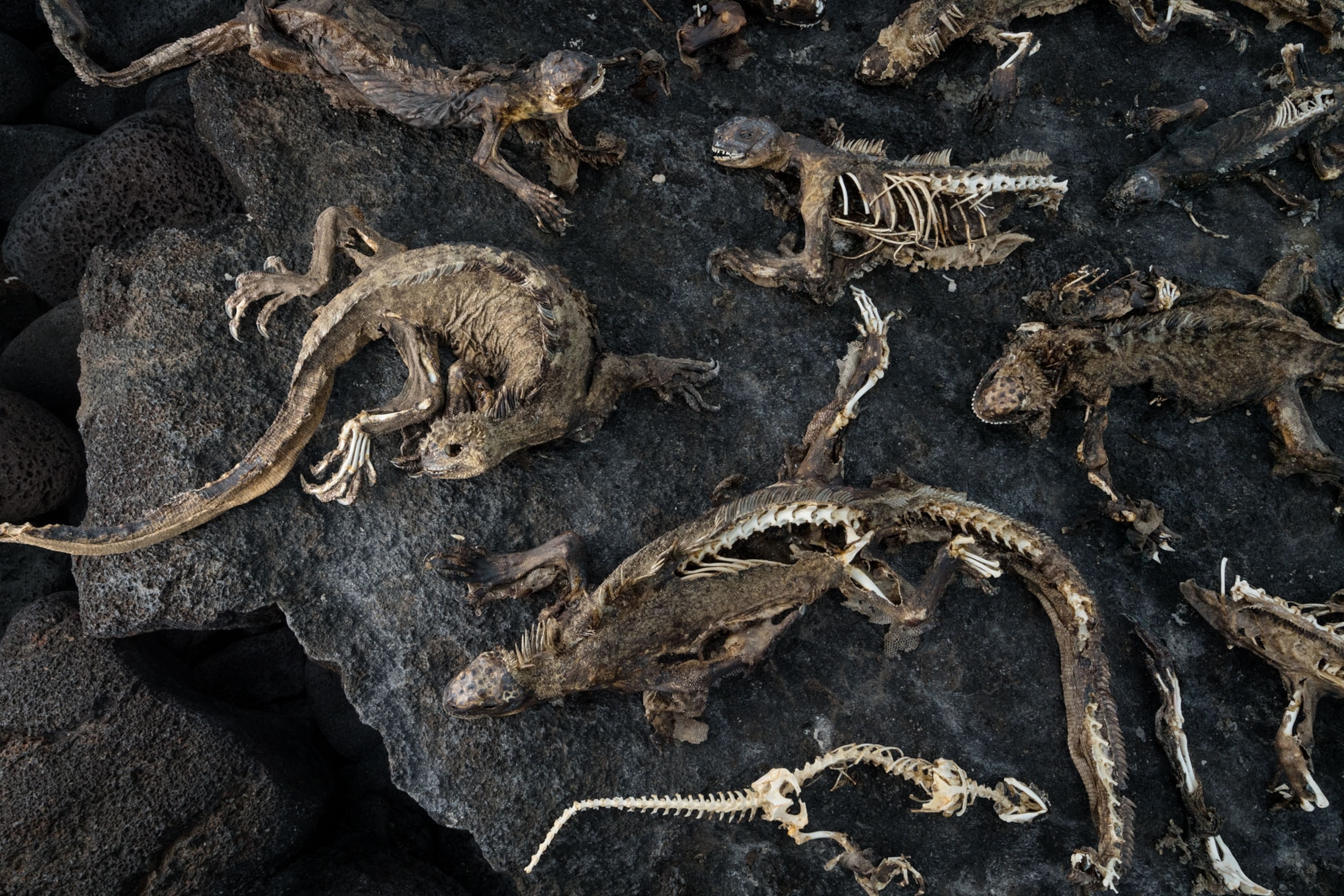
One reason the Galápagos are unique and so diverse—the reason, for instance, that penguins can share a beach with flamingos—is that four main ocean currents of varying temperatures bathe the islands. The deep, cold Equatorial Undercurrent, which travels about 8,000 miles across the Pacific, slams into the islands, upwells, and swirls around them, bringing to the surface nutrients that fertilize phytoplankton. This in turn fuels the rest of the marine food web. Everything is built upon this conveyor belt.
During El Niño the trade winds slacken. This weakens the upwelling of cold water and nutrients from the deep and also causes the pool of warm water in the western Pacific to expand toward the Galápagos. The conveyor belt nearly shuts down. The buffet closes. Marine life suffers dramatically. Some creatures may stop breeding; some even starve.
Some populations still haven’t recovered from an extreme 1982-83 El Niño. The Galápagos damselfish is now believed to have gone extinct because of that event. Meanwhile, fortunes are often flipped on land, where El Niño usually brings drenching, life-giving rains to the desert isles.
La Niña overturns everything. Marine life prospers while terrestrial life languishes. Witman likens the natural, repeated cycle to a roller coaster: Deprivation. Recovery. Abundance. Repeat. During Witman’s watch the Galápagos have experienced three major El Niños. In 2016 the warm waters led to reduced amounts of the algae the larger marine iguanas forage for in the sea.
Lizards of Land and Sea
Witman’s question is this: If waters here are generally growing warmer, and if intense El Niños become more frequent, will the bad times hammer the seafloor communities so hard that they won’t recover during the good times? And if so, will these communities turn into something else?
After the dive, to fortify his point, Witman shows me a snapshot of the coral on the seafloor below. “Normally this would be pink,” he says. Instead it looks like a badly poured layer of concrete. The coralline algae, which form a crucial crust on which the rest of the community is built, have disappeared. Why? Witman suspects that the warmer seas of the recent El Niño goosed the metabolism of pencil urchins that graze on the algae, so they’ve mowed down the bedrock crust at many sites.
Meanwhile, black-striped salema and creolefish—once abundant plankton-eaters that provide food for sharks, sea lions, and other top predators—“have become uncommonly scarce during this strong El Niño,” Lamb says.
The food web in the Galápagos already is being transformed by an array of factors to the point that some animals are having trouble adapting. The islands’ population of blue-footed boobies has fallen by about half since 1997. Scientists think they know why: The Galápagos’ sardines started to become rare (the reasons are not clear) in the diets of several predators around the same time. The boobies switched mostly to eating flying fish—which are harder to catch as they swim and are less nutritious. It’s like going from all-you-can-eat steak to prison rations, says Dave Anderson, a Wake Forest University biology professor. Blue-foots often don’t raise young when they’re not eating well.
Could the loss of species diversity lead to a downward ecological spiral? “With fewer species,” Witman says, “you have less resilience to threats.”
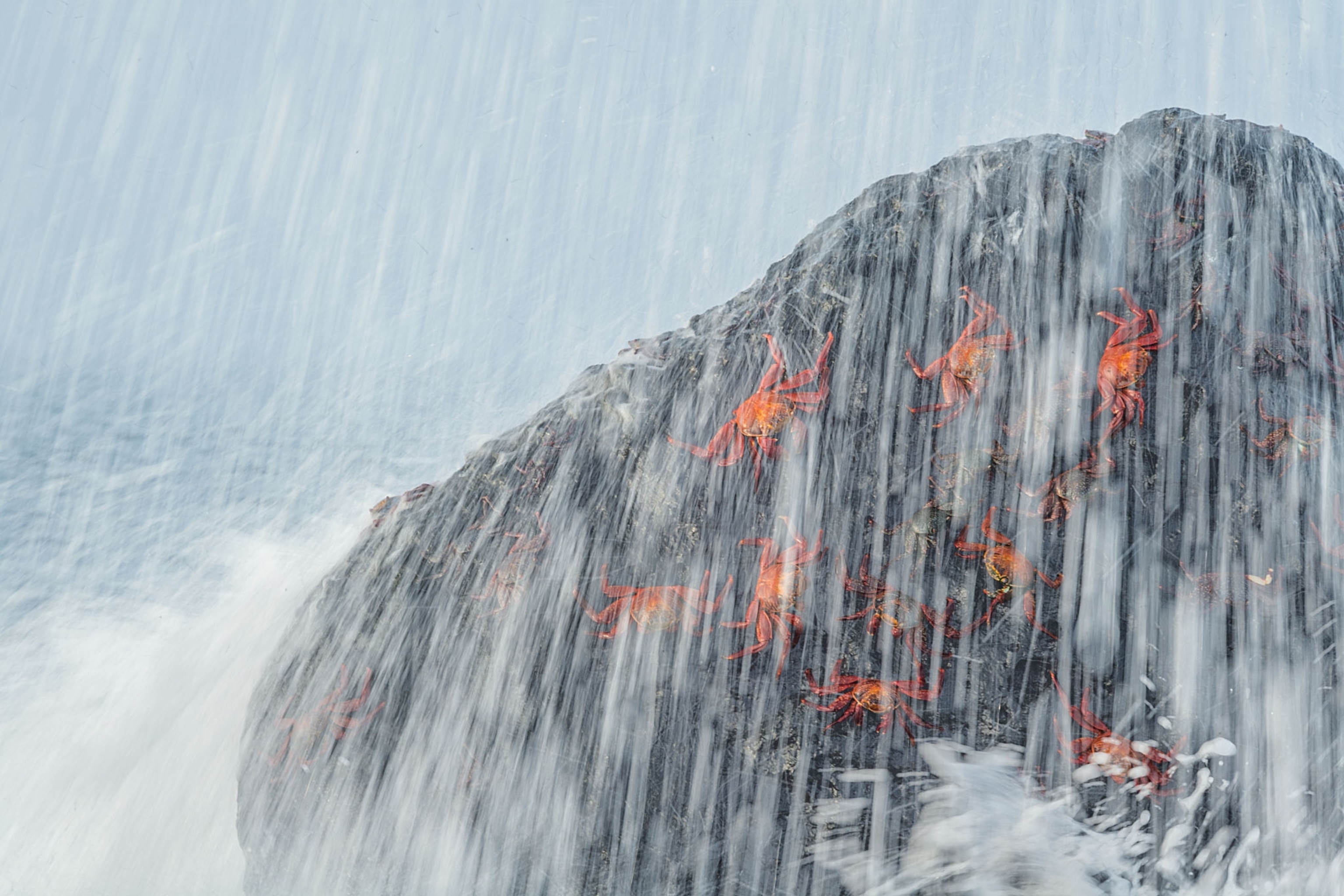
One day in March 2016 ecologist Fredy Cabrera and I stride through a dim highland forest on Isla Santa Cruz, the most populous island, home to about 15,000 people. Cabrera wears dirty blue jeans, a shy smile, and a T-shirt with a tortoise over his heart. We pass a boulder that issues a resigned hiss and retracts its head. We soon pass another boulder, then another. Giant tortoises seem to be everywhere.
Farther down, near the arid lowlands, Cabrera steps off the trail, removes a stiff wire grate from the ground, and begins to dig. Ten inches down he taps a buried cue ball. “There’s a bad egg,” Cabrera says in Spanish. Meticulously he excavates the nest. A wire barricade against predators wasn’t enough to save these eggs. “Six out of eight are broken,” Cabrera, an investigator with the Galápagos Tortoise Movement Ecology Programme, says. “Given those rains, that’s not unusual.” In January 2016, soon after the start of El Niño, damaging rains pounded the archipelago and inundated this patch of forest, causing many eggs to decay and crack.
Then there’s the temperature question: For many reptiles, “if you are incubated at relatively cool temperatures, you’re more likely to be a male, and if you are incubated at relatively high temperatures, you’re more likely to be a female,” says Stephen Blake, the program’s coordinator. “If climate change leads to generally warmer sand, you may suddenly find that the sex ratio is skewed dramatically toward females.” Scientists in several places around the globe, including the Great Barrier Reef and the Cabo Verde islands, are starting to see this phenomenon in sea turtles.
Failure to take pressure off the Galápagos’ flora and fauna could kill the booby that laid the golden egg: Of the seven animal species that tourists rank most important to their visit—tortoises, sea turtles, marine and land iguanas, penguins, blue-footed boobies, and sea lions—all are expected to decline because of climate change, according to a 2011 vulnerability assessment by Conservation International and WWF.
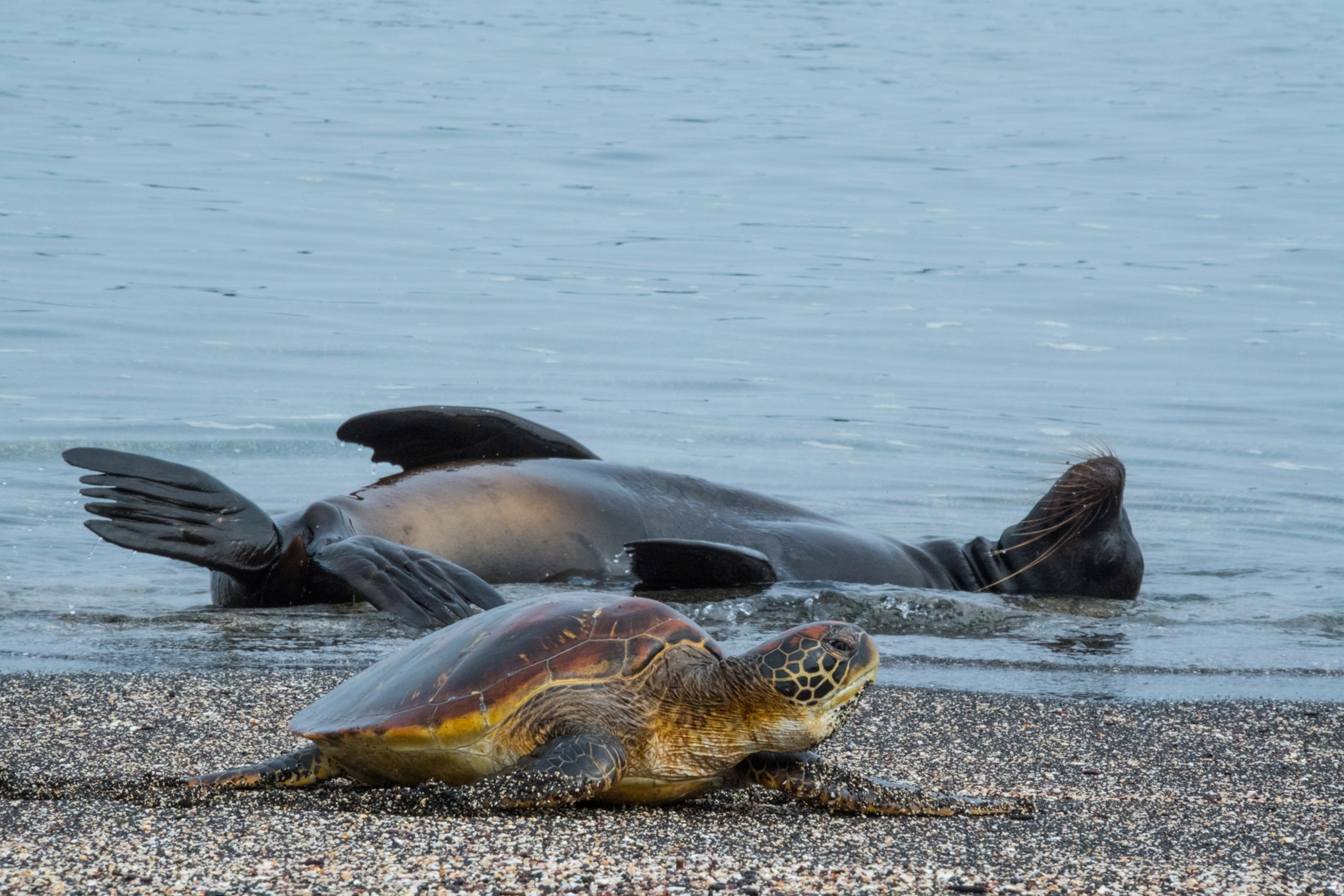
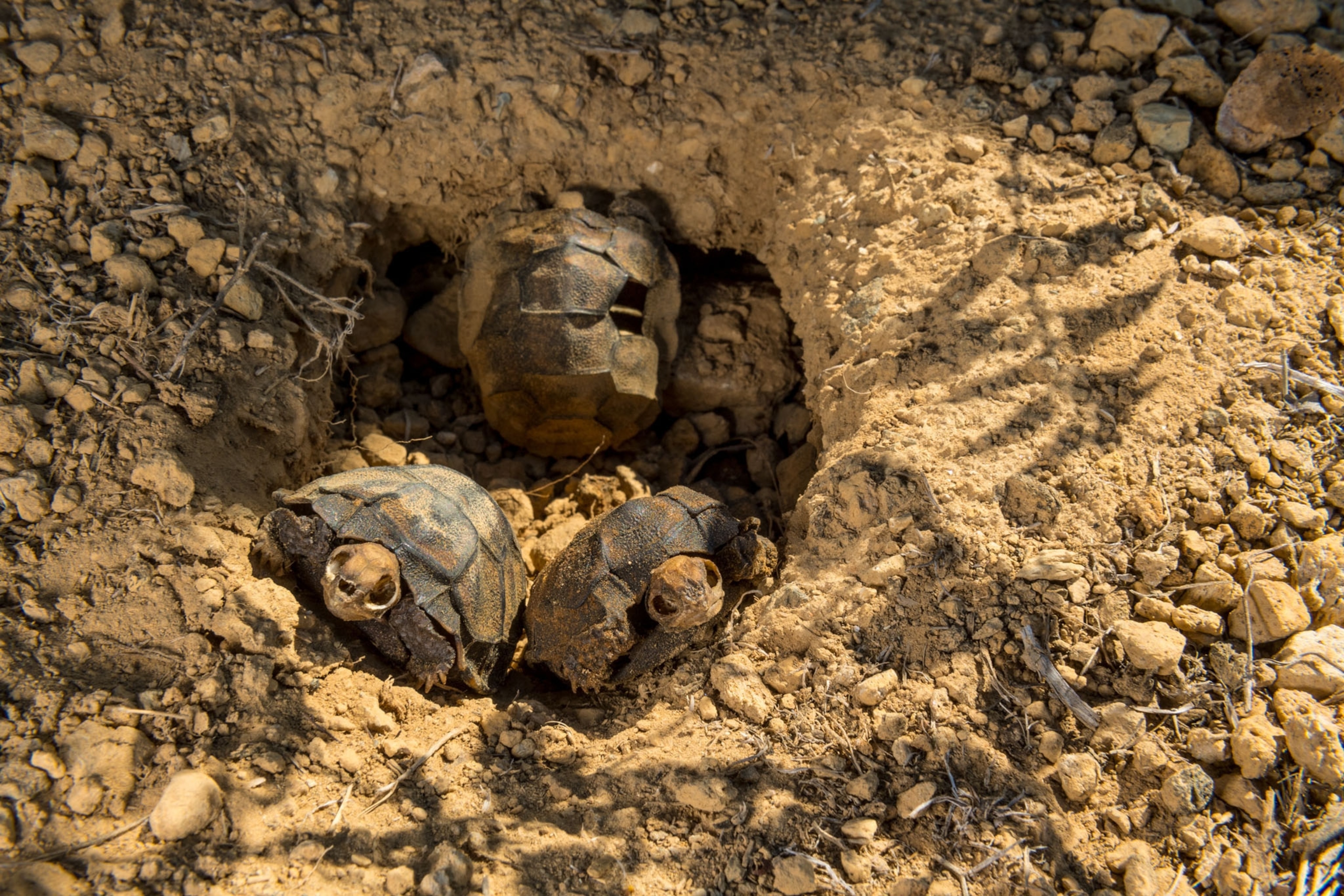
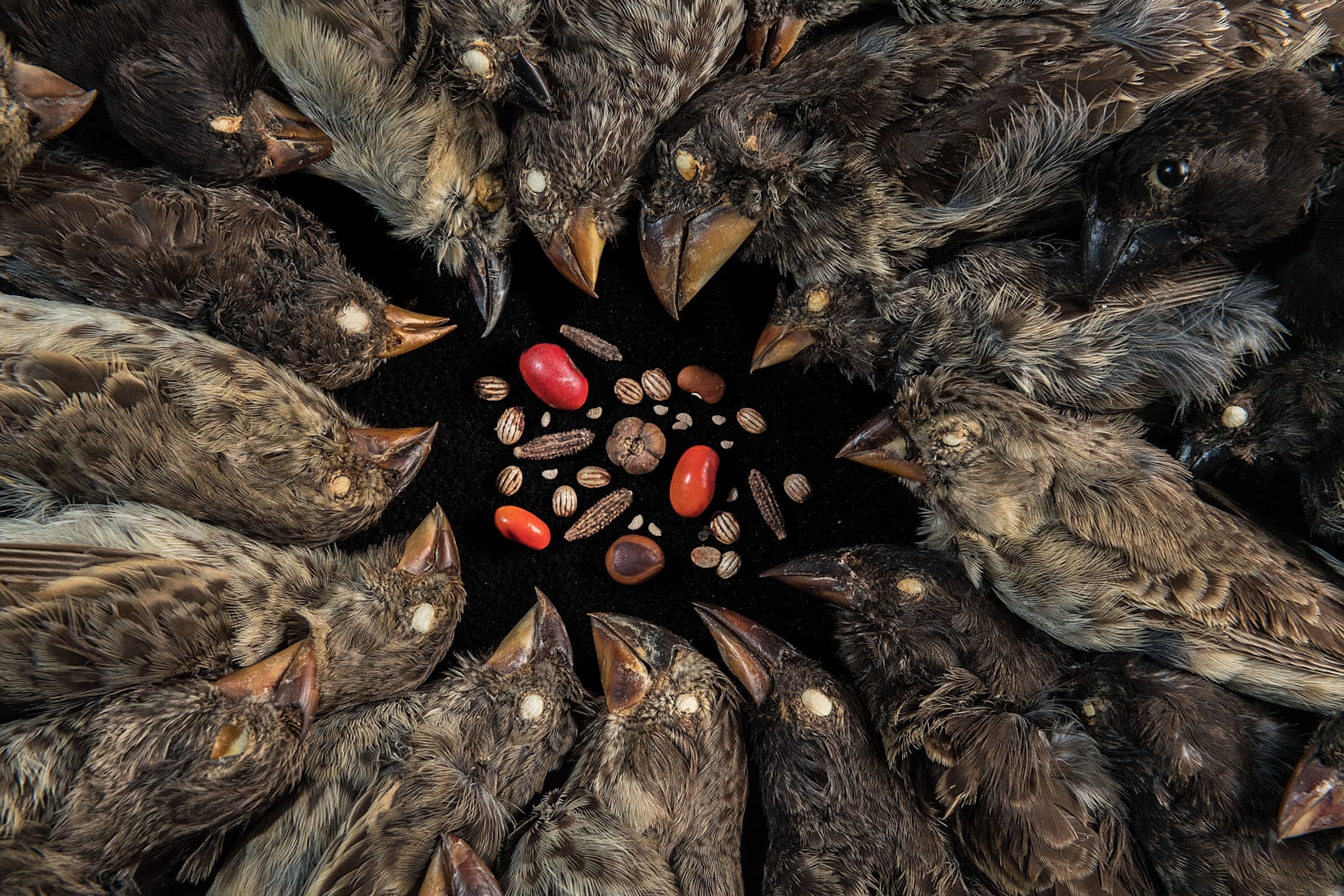

On another hot morning in the highlands, about 2,000 feet above the sea, Heinke Jäger follows a tourist group toward a grove of Scalesia trees. To the tourists nothing seems amiss. Jäger, however, sees a world of wounds. Jäger is a restoration ecologist with the Charles Darwin Foundation, overseeing terrestrial invasive plant and animal species. Since the islands were discovered, in 1535, humans have brought many alien species—some intentionally, like goats, pigs, cats, and both ornamental and food plants, to name a few. Others, such as rodents, insects, and weedy plants, have been introduced accidentally. Some of these, like the blackberry, have become invasive.
Now the Galápagos, Jäger says, are home to more than 1,430 introduced species, including nearly 800 plants. Many don’t cause problems, but some do. Invasive species are considered the greatest threat to the Galápagos and are one reason why UNESCO, in 2007, listed this place as a “world heritage in danger.”
A friendly tour guide with a sober topic, Jäger points out Cinchona pubescens, or red quinine trees, one of the hundred most invasive species in the world. In the highest zone of Isla Santa Cruz, Cinchona shades and reduces native plants and, by changing plant-community structures, hurts endemic birds such as the Galápagos petrel, a seabird with the unusual habit of burrowing into the ground as much as six feet to nest.
Walking on, she notes brakes of invasive blackberries in the forest. Scalesia forests provide homes to entire communities of orchids, mosses, and birds. Just one percent of these forests, razed for agriculture four decades ago (they are now protected), remain on Santa Cruz. Where blackberry has invaded the remaining forest, it smothers the ground and prevents seedlings from rising and finches from nesting.
If the future here is indeed wetter, all vegetation may benefit, “but it’s likely that the invasive species will really take off,” Jäger says, in part because they are more flexible than the plants that are highly specialized to survive Galápagos life.
Birds of the Galápagos
Across the archipelago a skiff nudges ashore on a remote black-sand beach on Isla Isabela, the Galápagos’ largest island. Francesca Cunninghame steps over the rocking gunwale. In her hands she holds a cage draped in black cloth. Her cargo: members of one of the world’s rarest bird species. Cunninghame is taking them home.
The famed finches of the Galápagos, known as Darwin’s finches—there are 18 recognized species (genetic studies are under way, and new species will likely be identified)—hold a prized, if erroneous, place in the popular imagination as the linchpin of Darwin’s understanding of evolution. In truth Darwin didn’t identify the islands where he collected finches and only realized his blunder upon returning home to Shrewsbury, England. So mockingbirds added to his later understanding of how one species might replace another through natural selection.
One of Darwin’s finches is the mangrove finch, which today lives in just two isolated patches (totaling about 74 acres) of forest here. Invaders already have found them—egg-eating rats and Philornis, a relative of the housefly that invades nests and has likely contributed to the local extinction of a warbler finch on Isla Floreana. Philornis larvae in nests increase in years of high rainfall according to one study, which could suggest more problems to come. Many land birds here are a bit like Goldilocks, preferring neither too little rain nor too much: Another recent study found that heavy rainfall led to decreased survival of fledglings. Today fewer than 20 breeding pairs of mangrove finches remain.

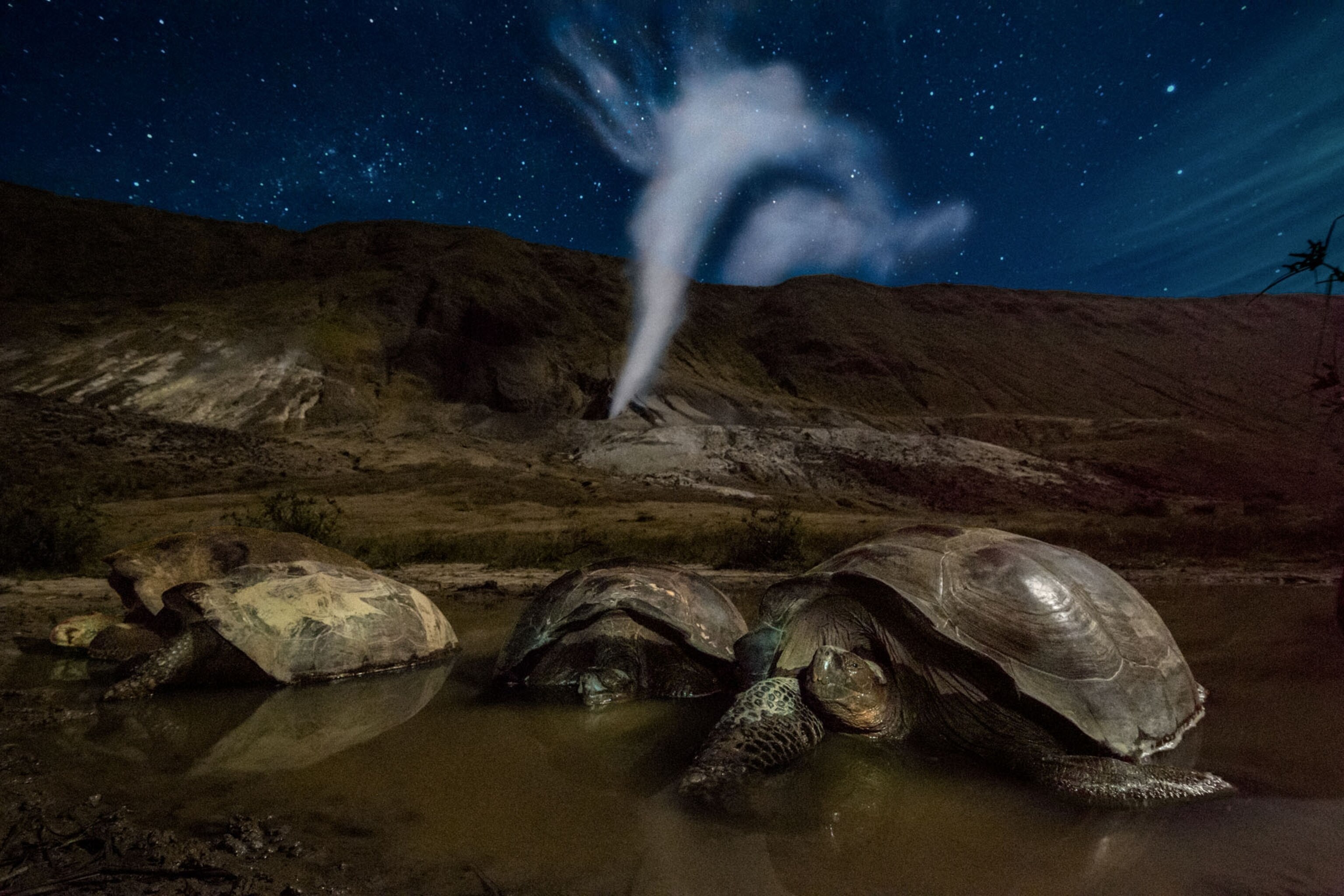
Carrying her precious load, Cunninghame walks barefoot across the burning sand and into a forest of tall mangroves. The light fades. The air cools. We walk deeper. A small wooden aviary appears. It’s raised above the forest floor and contains three screened chambers joined together that keep out predators. Inside, Cunninghame and her three assistants set to work laying out breakfast for the birds. They shut the aviary doors. Cunninghame opens the cages and gently removes 15 chicks one by one. Just four to eight weeks old and sooty in color, they seem less birds than puffs of cigar smoke.
Within minutes three chicks stand on the rim of their feeding dish, talking with their mouths full. For the next six weeks Cunninghame and others will remain here to release them gradually into the wild and conduct other research. Had they not collected and nurtured the season’s first chicks and eggs, the birds all likely would have died, she says. For the past four years, researchers with the Charles Darwin Foundation—in partnership with the Galápagos National Park Directorate and in collaboration with San Diego Zoo Global and Durrell Wildlife Conservation Trust—have worked to boost the population.
Cunninghame still worries. “Any change, or increase in sea level, could potentially destroy this forest,” she says. Mangrove finches prefer to nest in black and white mangroves that are buffered a bit from the open sea. It’s unclear how well they would adapt if those forests vanished.
Cunninghame is more than three months pregnant and feeling a bit unwell, so she lies down on the floor of the aviary and watches the fledglings. She laughs when the birds bicker, and then smiles. Something heavy seems lifted from her. “They’re back where they should be,” she says.
There is a lot more work to do. For a few minutes, though, Cunninghame lies in the dappled light and listens to the little birds. For a moment it’s the sound of victory.


